Match 193
Ground #: 151
Ground: Culverden Stadium
Competition: FA Vase Semi-Final 1st Leg
Kick Off: 3pm
Cost: £6
Programme: £1.50
Attendance: 1,754
Tunbridge Wells 2
Irvine 77’, Pilbeam (pen) 85’
Shildon 0
_____________________________________________________________
544 teams had entered the FA Vase this season. Now, in the semi-final stage there were the final 4, just two games from Wembley and a day in the sun (lets tempt fate) on May 4th. My route through the rounds had been fairly kind to me with only a wasted journey to the Isle of Man being the longest. Amazingly, Shildon the team who had beaten Ascot Utd in the QFs were drawn at home against the only remaining Kent side left in the tournament. As it was a short train ride away, I was off to the royal town of Tunny for the 1st leg.
As I know someone from the area, he kindly provided me with a history of Tunbridge Wells which is better than anything I could have written. So I hand you over to Mr Holdstock:
“'Something in the water' A brief history of Tunbridge Wells (in my opinion)
Quite a young town, The Wells near Tunbridge were discovered by Dudley Lord North in 1606. The story is that Lord North, being a fashionable man about town in London (and a courtier to King James I, VI to you Scots) was sent down to Lord Nevill's estate (South of Tunbridge Wells) to recover from the 'excesses of court' well we all know what that means! Anyway after a month he clearly got a bit bored and decided to venture back to London so he set off to join the London road at Tunbridge. On his way however, he noticed a brook that had red tinged edges and reminded him of a mineral rich spring he had seen abroad that had healthy giving properties. So he visited the nearest dwelling where a woman named Mrs Humphries lived and he asked her to dip the waters for him so that he could try it. Mrs Humphries then became the first 'dipper' and she actually lived till she was 102 years old!
Following that, Tunbridge Wells became a popular and fashionable spa resort as the water was recognised as mineral rich (from memory it's rich in Iron, giving it the reddish tinge, and magnesium and calcium). The water actually comes up from 300 metres below ground and is naturally chilled even in the summer. You should try it if the spring is open. So in Georgian times the Tunbridge Wells and Walks became a popular place for the wealthy to retreat for their health (drinking and gambling). The Pantiles area is so called because of the (now removed) tiles that were baked in a pan to pave the upper walk. This was originally done because a young royal visited and her son tripped on the walks so she gave money to the town to pave the walk. When she revisited nothing had been done and the money had been spent! So she appointed someone to ensure it was completed and it was.
The name Tunbridge Wells is taken from its northern neighbour now called Tonbridge. Tonbridge was called Tunbridge but this led to confusion when the railway was built and people would get off at the wrong stop so they changed the spelling of the name of the original but now smaller town to Tonbridge. It is however not pronounced any differently as some foreigners seem to think. You just have to say Tunbridge Wells when you are referring to Tunbridge Wells rather than shortening it to Tunbridge. Also the town was granted royal status in 1909 so its actual title is Royal Tunbridge Wells. People seem to think that Tunbridge Wells is posh, but it's not.”
Tunbridge Wells FC was originally formed in 1886 and played under several different names in their early years. They originally played friendlies as an amateur side until 1903 when they joined the Kent Football League, under the name of Tunbridge Wells Rangers. They stayed there for three seasons before joining the Southern Football League for the start of 1906/07. However after two seasons they rejoined the Kent Football league. In the 1911/12 under their present name they joined the Isthmian League for two seasons after which they played in the Spartan League. After WW1 they played in the Kent league, under the name of Tunbridge Wells Rangers again, and rejoined the Southern League as members of the Eastern Section, for 1931/32, after winning the Kent League in 1931. During this time, the club also competed in the Southern League Midweek Section, becoming champions of this competition in 1938/39 as well as reaching the 2nd Round of the FA Cup twice. After the war, the Wells briefly returned to the amateur leagues as Tunbridge Wells before re-joining the Kent League for 1950/51 as Tunbridge Wells United and then the Southern League for the 1959/60. During this period the club once again progressed to the 1st Round of the FA Cup but unfortunately endured a 5–0 defeat at the hands of Brighton. In 1961 they fared slightly better, edged out 3–1 by Aldershot – their last appearance to date in the Cup proper. In the early 1960s Rangers (a name they took in 1963) began to struggle in the Southern League and in 1967 the club folded. The supporters formed a new club, once again called simply Tunbridge Wells, and re-joined the Kent League where they have remained ever since. The Wells won the Kent League Championship in 1985 and have also won the Kent League Cup on 4 occasions since the reformation of the club. In August 2005, Tunbridge Wells made football history by winning the longest penalty shoot-out ever in a senior cup match. No less than 43 spot kicks were needed before Wells won the shootout 16–15 over Littlehampton Town in the FA Cup Preliminary Round. Recent seasons have seen them slowly move up the Kent League finishes with a decent 5th place (out of 16) last season.
Culverden Stadium is on the north side of the town and is a fairly standard ground for Level 9. The main redeeming factor to the place is the large terracing steps that sit behind one of the goals on the clubhouse side. These steps come back quite a way and so a great view of the pitch can be seen from here. Down one side of the pitch is a covered terrace that also houses the changing rooms while the other two sides are normally just hard standing. However, to accommodate the expected increase in the crowd (average attendance of Wells this season in the Kent League is 159), they had built a small wooden standing terrace down the other side of the pitch which also provided a fairly decent view of the match as I watched the proceedings from here. One down side to the ground is the amount of grass and grass banking in use. Normally, not a problem and a positive tick in my book, however the weather for this game had been and was dreadful and so the mud on the grass was quite substantial. White shoes quickly became brown and designer clothing quickly became charity shop donations from the people in the crowd.
Tunbridge Wells have had a fairly reasonable season and were coming into this game in midtable but with a huge backlog of rearranged games to come in the league still too. Their recent FA Vase run had also been impressive, meaning they entered this season at the 2nd Round stage and had so far seen off Wantage Town (2-0), Binfield (2-1), holders Dunston UTS (1-0), Larkhall Athletic (4-3) before beating Hadleigh United 2-0 in the QFs. While Kent League sides had made this stage many times before, they were up against it in making the final as history was not on their side. Especially when they were playing Northern League sides who had dominated the competition in recent seasons. Even last season, Kent League winners Herne Bay were dispatched in the SFs by eventual runners-up West Auckland Town. Shildon were probably the favourites going into this tie, not helped by having the 2nd leg at home as well but Tunbridge Wells could possibly build up a lead here down in Kent and hope to defend when they went up to County Durham the week after for the 2nd leg.
Had this game been played between two teams who were not 289 miles away from each other, I am 100% sure it would had been called off. As it was, the game only took place after the Shildon manager had agreed to play the match on the surface. Backed by a healthy away support, the Northern League side started well as Michael Tate’s cross allowed Carl Jones to fire a header straight at the Wells goalie Chris Oladogba. Shildon looked also impressive on the counter attack and speedy striker Sam Garvie was causing the Wells back line all sorts of problems with his pace. Quickly however, the pitch began to win. The mudbath turned the game into a slog as sliding tackles came in and players began to lose the ball due to it getting stuck in the mud. The quality also started to diminish as both sets of players were struggling to play any decent football but the game was still an intriguing one. Tunny hadn’t offered much upfront but Jon Pilbeam should have done better when he was found in the area but the chance was cleared. Chance of the half however fell to Garvie as he raced away down the right but his shot was weak and Oladogba easily saved. The first 45 minutes were like It’s A Knockout but with a lot a stake, it was still an entertaining watch.
The second half saw the temperatures drop and so the pitch get even stickier as the match became the Kent version of Stalingrad. Absolute stalemate as very few chances were created and a 0-0 finish seemed likely. Shildon were beginning to tire and when Oladogba saved another shot comfortably you began to wonder if Wells could create a chance, they could nick this game. The home players must have thought that too as they began to push forward and put the Shildon defence under pressure. The NE lads first real test was see Perry Spackman head wide after his marker went missing from a cross before another cross into the area caused panic as the Shildon defence just didn’t look up to it. That was confirmed on 73 minutes when the home side took the lead as you began to feel the tide was turning. Caught in possession, Shildon were hit on the break by Carl Cornell put Pilbeam clear down the right. His cross into an empty penalty area was found by Andy Irvine, who controlled the ball well and lofted it over Keith Finch to make it 1-0. The celebrations began! The wooden stand was bouncing (literally bouncing as the mud clearly affected the structure) and someone even let off a flare to get the party started. You did think however that Shildon would come back from 1 down, so Wells gave themselves an excellent opportunity to progress by scoring a 2nd on 84 minutes. Cornell got into the penalty area and was floored by a needless and tired Shildon challenge. Pilbeam coolly dispatched the penalty and while Shildon had some possession in the final few minutes of the game, Oladogba wasn’t troubled and they took a 2-0 lead up to County Durham.
Shildon had asked the whole town to show up for the 2nd leg showdown and while I thought they would definitely score, they would also definitely concede too. As it turned out, I was right as Shildon raced into a 3 goal lead through goals from Chris McCabe, Jamie Lee Owens and Garvie, but Tunny took the game into extra time as Irvine scored another crucial goal in the tie before Spackman scored in the 116th minute to send the Wells to Wembley. Shildon did have a late goal ruled out for offside which “shouldn’t have been”, but these things happen.
In the aftermath of the game, I was disappointed with comments on Twitter from Shildon as while they had every right to be disappointed, they came across as quite sore losers. Starting a statement, “I’m not bitter but...” probably shows you are. Tunny defended well in the 1st leg where I saw them and took their chances well as they deserved something from a positive 2nd half at the Culverden Stadium so well done them. Their FA Vase final tickets are also selling well as at the time of writing, they have sold over 5,100 which means their fans alone will total more than the whole attendance of the 2012 Final. I’ll be there with them on May 4th and while they may start as underdogs against Northern League side Spennymoor Town, if they are backed by a big support then who knows what could happen. They’ll enjoy the day for sure I’m guessing.
Photos from Tunbridge Wells vs Shildon
_____________________________________________________________
Match Ratings:
- Match: 7/10 (absorbing)
- Value for money: 7/10 (cheapest Vase semi-final ticket)
- Ground: 5/10 (decent in places)
- Atmosphere: 9/10 (chants, drums and flares – spot on)
- Food: 6/10 (reasonable burger)
- Programme: 4/10 (missing some basic information)
- Referee: Michael Bull – 6/10 (took the conditions into account)
ROAD TO WEMBLEY 2012/2013:
1ST QUALIFYING ROUND: Colliers Wood United 3-1 Badshot Lea (Wibbandune Sports Ground, Att: 37)
2ND QUALIFYING ROUND: Camberley Town 1-4 Colliers Wood United (Krooner Park, Att: 36)
1ST ROUND: Lingfield 1-2 Colliers Wood United (Godstone Road, Att: 50)
2ND ROUND: Colliers Wood United W/O – W/O Old Woodstock Town (N/A, Att: N/A)
3RD ROUND: Colliers Wood United 2-3 Ascot United (Wibbandune Sports Ground, Att: 70)
4TH ROUND: Borrowash Victoria 0-3 Ascot United (Watkinson Construction Bowl, Att: 157)
5TH ROUND: Newport IOW 2-2 Ascot United [After Extra Time] (The Racecourse, Att: 474)
5TH ROUND REPLAY: Ascot United 2-1 Newport IOW (The Racecourse, Att: 359)
QUARTER FINAL: Shildon 1-1 Ascot United [After Extra Time] (Dean Street, Att: 448)
QUARTER FINAL REPLAY: Ascot United 1-4 Shildon (The Racecourse, Att: 780)
SEMI FINAL 1ST LEG: Tunbridge Wells 2-0 Shildon (Culverden Stadium, Att: 1,754)
SEMI FINAL 2ND LEG: Shildon 3-2 Tunbridge Wells [After Extra Time] (Dean Street, Att: 900)

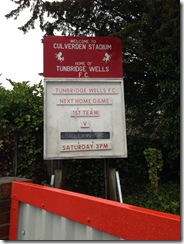
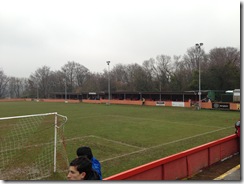
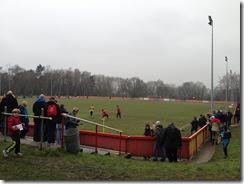
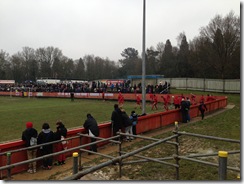
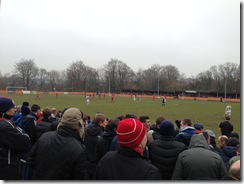

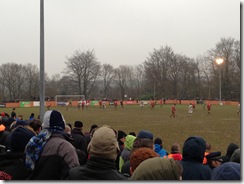
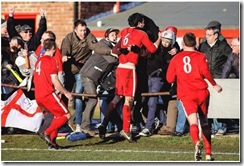
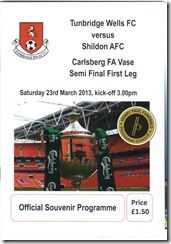

Hi Steven
ReplyDeleteAn excellent read as ever.
I shall pass on a bit of advice someone gave me when I started my blog: make your font and pix as large as you can get way with - and keep your paragraphs short ( 2 sentences at most).
Readers (especially casual ones) hate big blocks of small text - so I was informed.
Regards
Ian